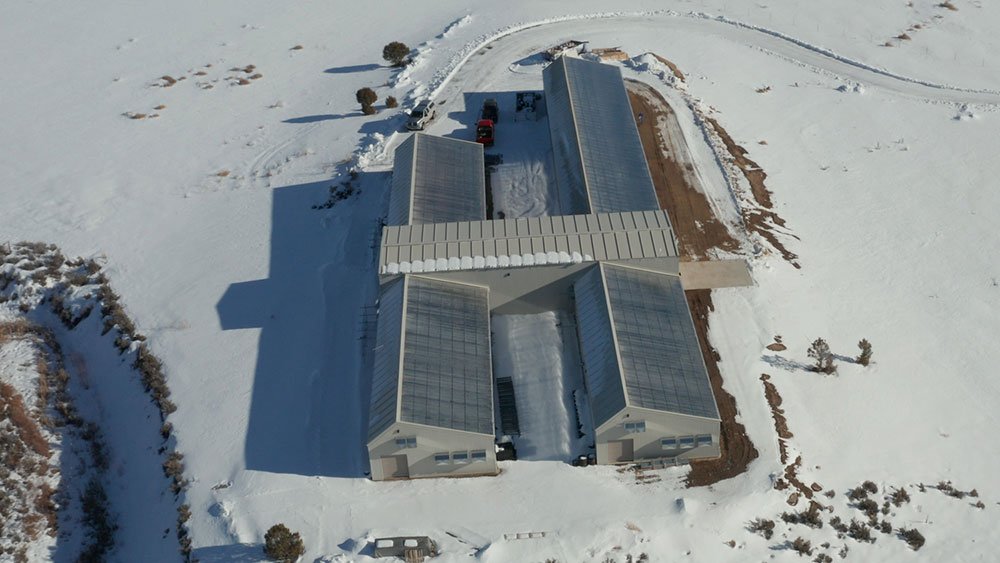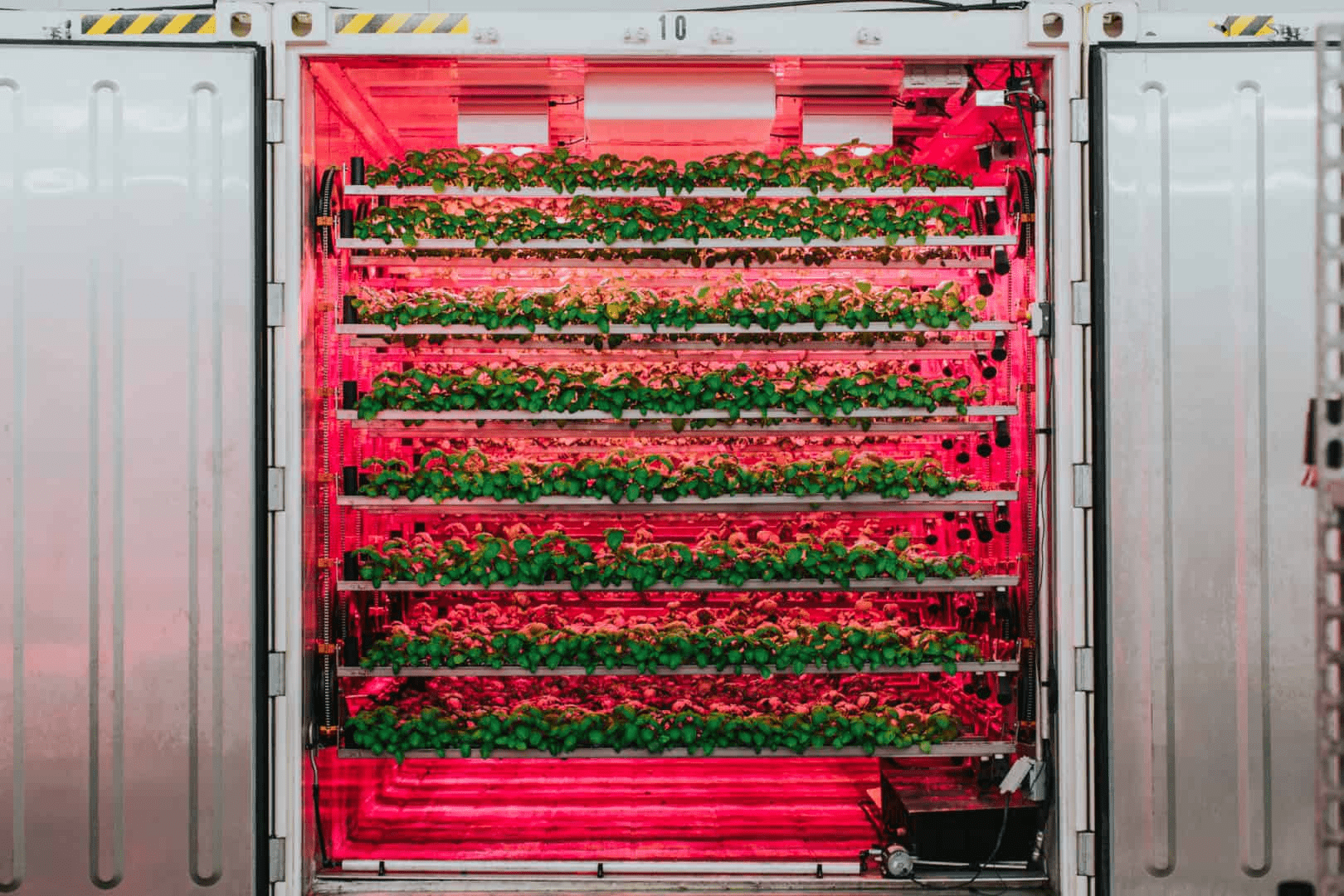Oct 18, 2022
5 Organizations Trying To Solve CEA's Energy Problems

LED lighting is an important aspect of indoor farming operations, but it consumes energy, contributing to a farm’s overall costs. Credit: GreenBiz.
The 2021 Global CEA Census Report revealed that at least 38% of greenhouses and vertical farms don't track their energy use. The findings further showed disparities in the regional tracking of energy use, indicating that the Americas trailed behind Asia and Europe, which are emphasizing energy tracking at higher rates. These discoveries lead to an understanding that with energy use taking center stage in both financial viability and environmental sustainability conversations in the CEA industry, there's a need for solutions to CEA’s energy problems.
But even with the energy dilemma hanging over the CEA industry, various organizations are making significant strides in addressing energy efficiency. In this article we highlight 5 organizations trying to solve CEA's energy challenges in unique ways.
Ceres Greenhouse Solutions

The unique design of Ceres’ passive and modular greenhouses. Credit: Ceres Greenhouse Solutions.
Greenhouses are generally considered more energy efficient because they utilize sunlight as a primary energy source. Indeed, the CEA Census found that greenhouses on average use one-seventh the energy of vertical farms on a kWh per kg of product basis. Ceres Greenhouse Solutions is an organization that takes these efforts even further by designing greenhouses that maximize energy from the sun. Ceres has even patented their unique design which is most efficient in cold climates and includes the possible addition of a ground-to-air heat transfer system (GAHT).
Their greenhouses are also designed to ensure that greater amounts of light can enter through the southern extension of the greenhouse roof, with the north side of the roof configured with a reflective surface. The configuration of the north wall ensures the uniform distribution of light and because there are no windows, this section (north wall) can be thermally insulated. The greenhouse design makes Ceres a leader in “passive” greenhouse design, a term used to describe maximizing the natural light, heat, and air movement in a specific location in order to create an interior environment that minimizes the need for energy from the grid to light, heat, and/or cool a building.
Another innovation is the Ceres EcoLoop, a geothermal HVAC system. The EcoLoop is a renewable energy source that uses the earth's temperature to help heat or cool air, generating the desired temperature for crops. Through such greenhouse solutions that are designed for commercial uses, residential uses, and smaller kits, Ceres offers sustainable solutions to all types of farmers.
CubicFarms

CubicFarms growing technology with LED lighting. Credit: CubicFarms.
Can plants get optimal light if they are moving within a farm? CubicFarms is an organization that came up with an automated solution called Crop Motion technology. Their innovative Crop Motion system automatically moves crops in a highly controlled vertical farm. Within the system, crops move under LED lights every 90-120 minutes, ensuring that each plant gets the right amount of light while minimizing wasted energy. Another benefit of CubicFarms' rotating hydroponics tech is efficient harvesting and planting because tasks can be done from the same location.
According to CubicFarms, the technology is an innovative solution to CEA energy needs because the rotation reduces the amount of energy used in providing lighting to crops. The 2021 CEA Census found that a shipping container-based vertical farm used an average of 38.8 kWh per kg. Meanwhile, CubicFarms reports that their CubicFarm System farming technology reduces the energy used in a vertical farm to 17.71 kWh per kg, which represents 54% less energy than a typical farm. Another innovation, the CubicFarms FreshHub System - a high-density system for green leafy produce - utilizes 14.95kWh per kg, which translates to 62% less energy. The data reported by CubicFarms indicates that their designs can help container vertical farms achieve lower energy numbers.
Schneider Electric

Wind power is an innovative and renewable energy solution that Schneider Electric can help implement. Credit: Schneider Electric.
Schneider Electric is another organization finding innovative solutions for sustainability. With 180+ years of innovation, the multinational’s reputation is strong. And with its energy management solutions that can automate operations and lower energy parameters, Schneider can help build resilient farms to benefit farmers, consumers, and the planet.
An initiative that highlights Schneider Electric’s dedication to the energy challenges of the CEA industry is its hybrid microgrid systems. Made possible through a partnership with Scale Microgrid Solutions, Schneider’s microgrids are designed to make vertical farming more resilient and energy self-sufficient. Microgrids – local energy grids with control capability that often utilize renewable power generation from solar or wind – are considered the next frontier for indoor farms. Immediate benefits include avoiding paying peak demand charges, maintaining uptime during grid outages, and revenue generation through ancillary service programs.
Some successful Schneider operations include work with New Jersey’s Bowery Farming and Pennsylvania’s Fifth Season.According to Chris Evanich, Program Director for Energy As A Service, Schneider Electric’s work can “bolster resilience while accelerating sustainability goals.”
Urban Crop Solutions

An indoor farming setup growing basil plants. Credit: Urban Crop Solutions.
Urban Crop Solutions (UCS) has set itself up as a visionary leader in the vertical farming segment by creating energy-efficient solutions. United Crop Solutions is an end-to-end provider for vertical farms that design, manufacture, and install automated plant factories. With intelligent engineering and years of research and experimentation, UCS has helped customers select the right plants and environment for growing. The organization's research culture and need to constantly improve have allowed them to improve on innovations over time, creating meaningful improvements.
One innovative solution for energy concerns is their ModuleX Plant Factory which revolutionizes indoor vertical farming. The climate control system, which comes with advanced lighting technology, has made it possible to use less energy, even with intensive use. Through double heating pumps that allow for heat removal when temperatures rise, ModuleX repurposes energy for dehumidifying the cultivation space. According to Maarten Vandecruys, founder and CTO at UCS, the breakthrough system reduces the dehumidifying costs from 100kWh to 30kWh per day. ModuleX makes it possible to reduce energy consumption through an algorithm that adapts to the needs of plants.
Resource Innovation Institute (RII)

A greenhouse setup often requires a wealth of energy to maintain. Credit: Resource Innovation Institute.
Other than organizations and farms working to solve the energy needs of the CEA environment, non-profits also play a vital role in the process. The Resource Innovation Institute (RII) advocates resource efficiency and best practices in the CEA space. By creating industry standards, promoting best practices, and advocating for effective policies, RII has transformed itself into a valuable partner to CEA producers and project partners.
A major new initiative by RII is their Resilient Harvests Conference, bringing together hundreds of industry stakeholders. Another is PowerScore, a resource efficiency benchmarking tool for the industry. Such initiatives by RII highlight its dedication to promoting sustainability in the indoor agriculture industry.
Solving energy problems is good for CEA
As climate change continues to create unprecedented and extreme weather events, the need for more resilient agriculture via CEA is clear. But there’s also a need to address the current energy use of the industry. Agritecture and WayBeyond’s 2021 Global CEA Census found that vertical farms around the world reported using 38.8 kWh per kg of harvested crop, on average. For growers and technology designers, finding sustainable solutions to the energy dilemma is key to future progress. While some innovations like microgrids can allow indoor farms to generate and use their own electricity to improve resilience, only a small minority of operations use these systems today.
Still, it’s important to note that while these organizations are snapshot examples, they are not the only ones doing impactful work. Hundreds of global organizations are working collaboratively and inclusively to find long-lasting solutions.
Editor’s Note: This is not meant to be an exhaustive list of organizations tackling the CEA energy challenge, but rather a condensed list of organizations who have been some of the most transparent in sharing their strategies and data with us. This list also contains some organizations that are affiliated with Agritecture. Ceres Greenhouse Solutions and Urban Crop Solutions are members of the Agritecture Partner Network. Schneider Electric is a current Agritecture client. Please get in touch with Agritecture to share your sustainability data or strategies for a chance to be included in future articles.
